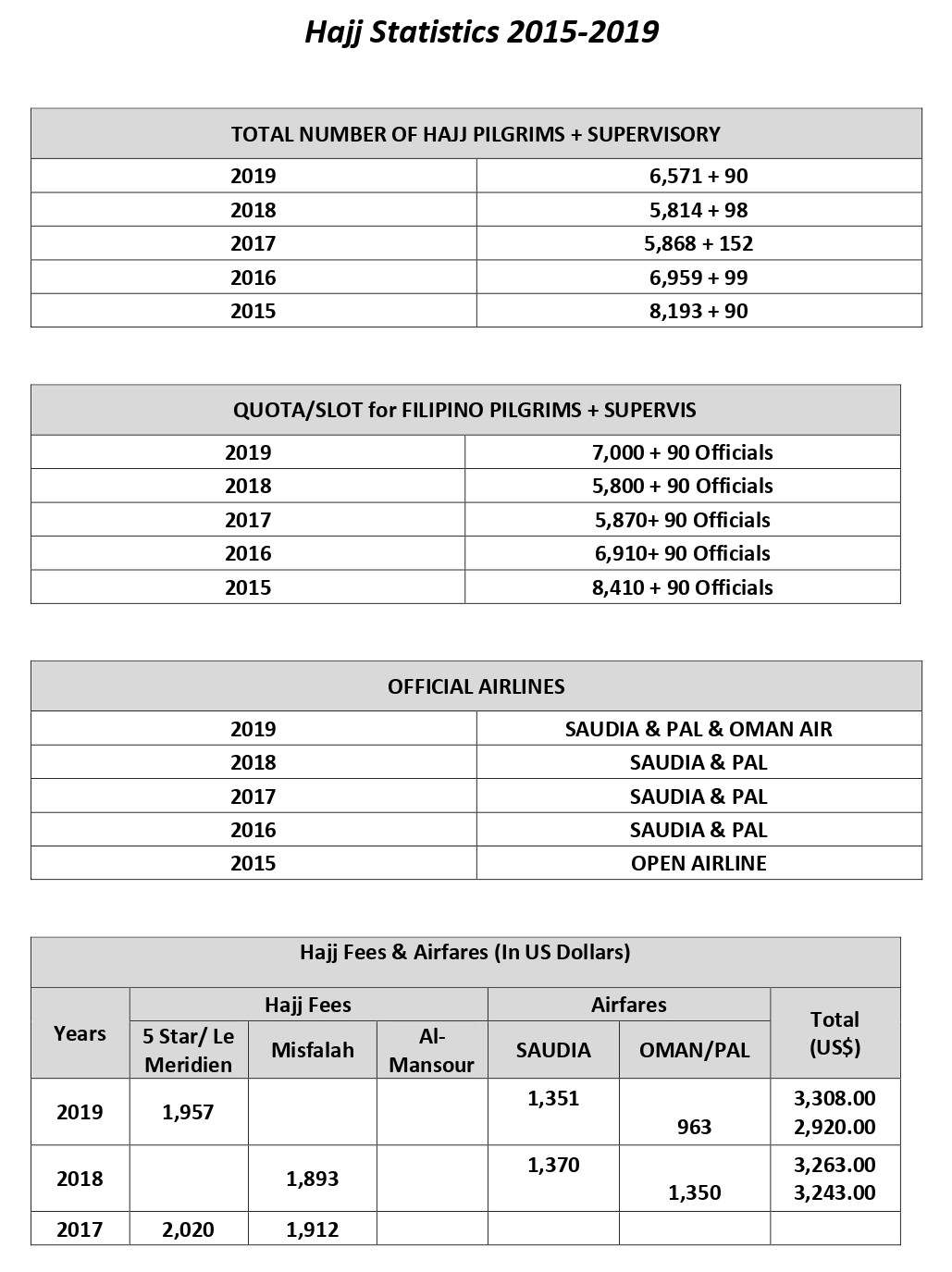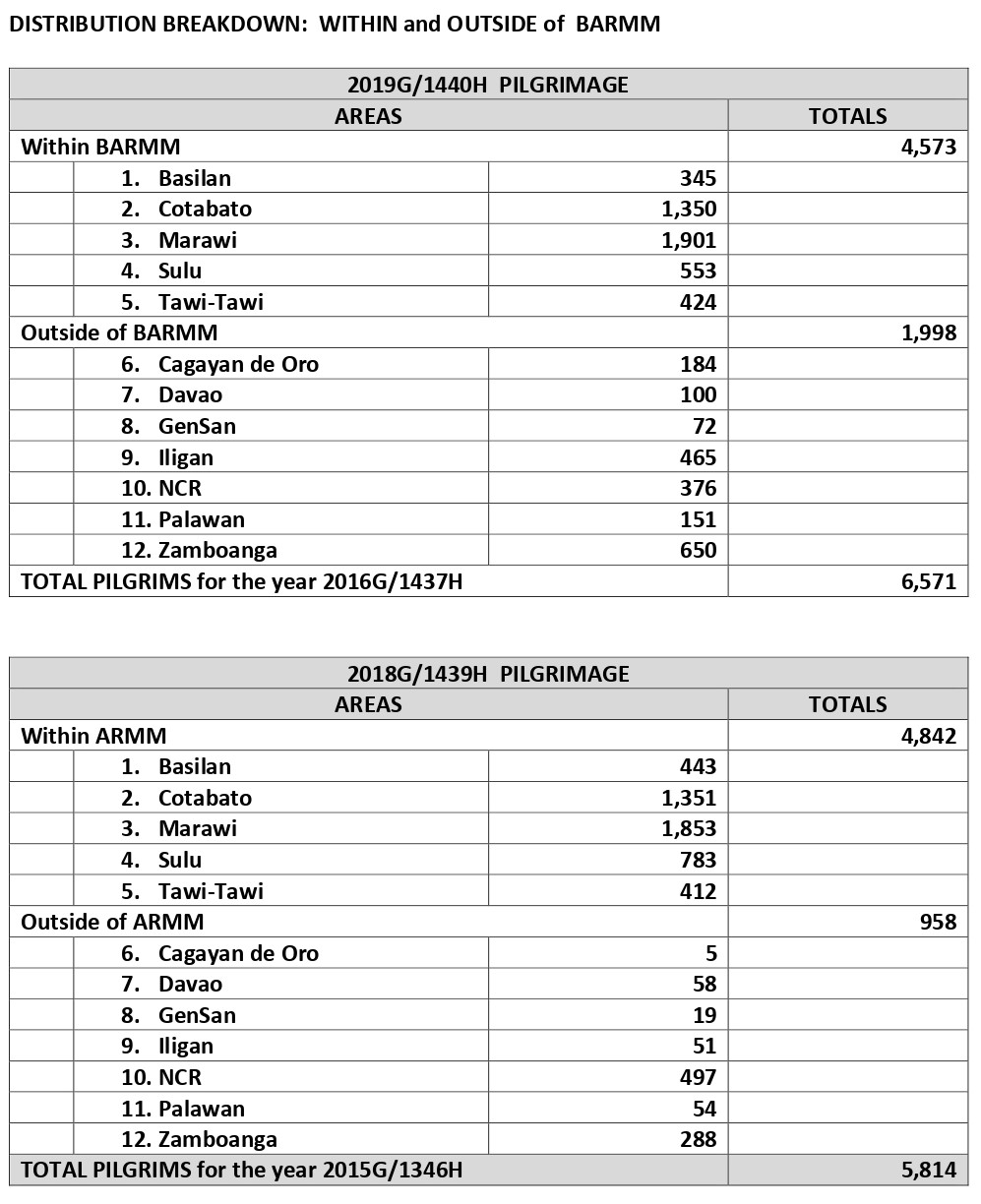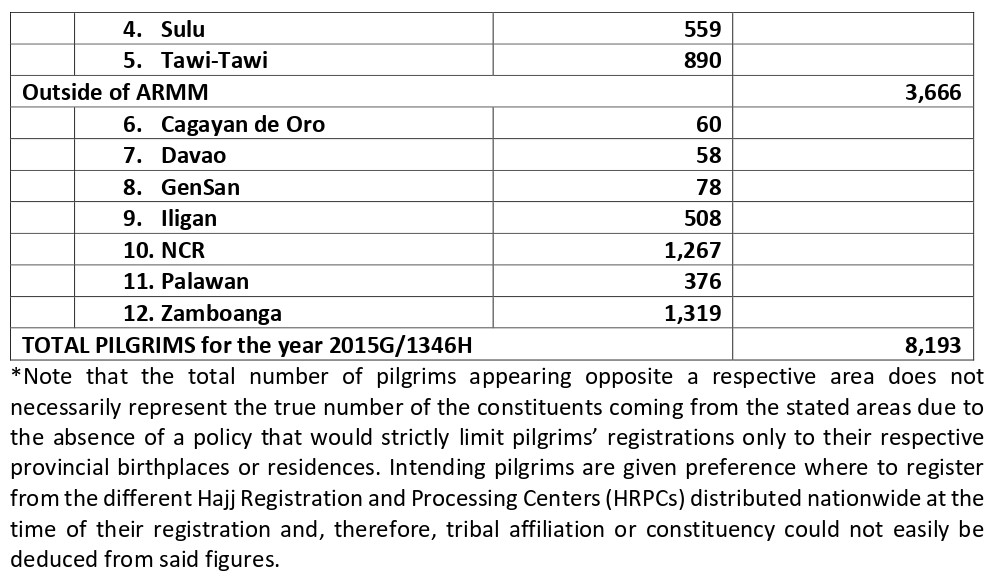The Hajj and the Filipino Pilgrims
By virtue of RA 9997, the NCMF through the Bureau of Pilgrimage and Endowment has been mandated to oversee the annual Hajj for Muslim Filipinos residing in the Philippines. The data from 2015 to 2019 show that there have been between 5,000 to 8,000 Filipinos joining the pilgrimage yearly. The 2020 data showed that HOW MANY PILGRIMS left for the Kingdom of Saudi Arabia after 2 years of the COVID-19 pandemic forced the Saudi Government to close its doors to foreign pilgrims.
The Hajj is one of the 5 Pillars of Islam, with a Muslim obligated to perform it once in their lifetime. However, not all are qualified, and intending pilgrims are expected by the NCMF to comply with these basic requirements prior to their application:
- Spiritually prepared: The intending pilgrims are expected to have a sincere intention which is aimed only to seek Allah’s pleasure. They should also be familiar with the stages and rituals of the Hajj, and other recommended devotional acts.
- Financially capable: It is not an easy task to leave your family and home country for a month. So aside from having the capability to pay for travel expenses and mutawif fees, the pilgrim should also have prepared provisions for dependents left at home. It is also beneficial is he has no personal debts, and that the pilgrimage funds he has are not borrowed money or gathered from begging.
- Physically and mentally fit: The activities done during the Hajj are physically taxing, and aside from the climate in Saudi Arabia, these put a toll on a pilgrim’s body. His physical and mental condition must be confirmed by a licensed physician, and now with the pandemic, vaccinations are also required.
Annually, majority of the Muslim Filipino pilgrims are from Lanao, Zambasulta, and Cotabato. Their applications are received in their respective NCMF Regional or Field Office, which are then processed centrally by the Bureau of Pilgrimage and Endowment in the Central Office. For Hajj 2022, the e-Hajj was introduced, and will be undergoing further software development prior to Hajj 2023.
For additional data on the Hajj, please scan the QR code.
Changes in the Hajj Operation because of the COVID-19 pandemic
- Operating under the uncertainty of Hajj performance.
Though Hajj is not certain to include foreign worshippers for these years of the pandemic as previously experienced, some certain programs and activities are necessary to be held to keep the Bureau at pace in case the Kingdom of Saudi Arabia declares inclusion of foreign worshippers. Thus, the following changes in the operations were adopted as follows:
- Register now pay later scheme. Unlike in the non-pandemic years, Hajj registration cannot be made official without the need to pay for the Mutawiff or Hajj Services This time, registration is accepted and payment will only be required when Hajj is declared to happen.
-
- Hajj Awareness Programs are held with lacking vital Hajj information. HAP are held even without the usual information such as the new policies of the host Kingdom for the ensuing Hajj, the Mutawiff Fee, and other information that were basically acquired from the Annual Hajj Conference
b. COVID-19 Vaccination as an added vaccination requirement to pilgrims aside from usual influenza and meningococcal vaccines.
c. Adoption of the eHajj online registration for 2022 as a means to lessen face-to-face transactions.
d. Extended Hajj Awareness Program (HAP). As a result of the restriction of the Hajj to Saudi nationals and expatriates only, un-utilized Hajj funds were now used to fund Hajj Awareness Programs and other Hajj-related activities outside of the areas where HAP is usually The BPE was able to extend its campaign for Hajj to some areas in North and South Luzon, Visayas, and some far-flung areas in Mindanao.






